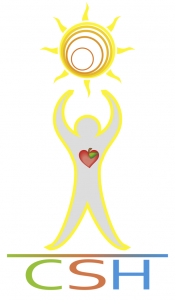Contributed by Hunter Kelly (Teacher Candidate)
The Greener Village Community Food Center, formerly known as the Fredericton Food Bank has grown to become so much more than a food bank. They operate as not only a food bank, but also a clothing boutique, teaching kitchen, community garden, and a life skills development center. Their goal as an organization is to help the people of Fredericton become self-sustaining. Instead of simply providing food for those in need, they are teaching the community how to grow their own food, as well as how to live a healthy lifestyle.
The Greener Village does an excellent job at supporting the community, and there is a lot that schools can learn from them. The Greener Village programming can be implemented at schools on a lower scale to help with student learning. If schools implement a community garden program, it can contribute to all the Foundations for a Healthy School area and all of the Comprehensive School Health Pillars.
The main purpose of a school is to deliver curriculum to the students. Giving students the responsibility of a community garden can be integrated into many parts of the curriculum. Firstly, in can be used to teach life systems from the Science curriculum. Secondly, it can be used to educate students on healthy eating from the Health and Physical Education curriculum. Thirdly, a community garden can be used to teach The Art, through designing the garden layout and garden art. Lastly, a community garden can be used to teach the Mathematics Curriculum. When planning a garden there are many calculations of area and volume that need to be made. Using the calculations in the creation of the garden can be a fun way to keep students engaged in the activity. Engagement is a very important aspect when planning activities for students. Without engagement students will not create memories that will last. Having a physical outcome, such as fruits and vegetables can help keep student engagement strong. It has been found that student engagement is the lead determinant of student learning (Boaler, 2008).
The Greener Village can help support the development of a community garden in the way of education. They can teach students workshops to get the program started.
While teaching curriculum and increasing student engagement, students can also learn valuable classroom and school leadership skills. Students can learn about leadership by watering and caring for the garden. Buddy programs can also be started so that students caring for the garden can teach other students about their work (Hoy, Johnson, Mathew, & Editor, 2013). They can also learn about community responsibility and respect, since the garden is in their neighbourhood.
An Australian primary school implemented a community garden at their school and the results for the school as a whole were outstanding (Block, Gibbs, Staiger, Gold, Johnson, Macfarlane, Long & Townsend, 2012). The social and physical environments of the school were completely changed by having a community garden. There was an increase in student engagement, confidence, team building skills, and social skills and connection between the school and its community. This increases accountability and bonds of friendship among students. It also changed the schools climate, which made the school a more positive learning environment.
When schools are in close proximity, such as schools from different school boards that border on each others property, it can be easy to create partnerships by sharing the garden. Both schools can work together to create the garden and reap the benefits of doing it together. Ultimately students can bring their knowledge home to help their parents learn about plants and how they can contribute to healthy living.
All of these benefits lead to a healthier school. In support of the Healthy Schools Policy a community garden can help increase consumption of vegetables, increase physical activity among students and therefore create a healthier environment to support learning. The Greener Village is an excellent resource for schools. They can help support schools in all stages of their garden development. They can also be use to teach students about food insecurity and how we can all help by donating to local food bank. When working to create healthy schools, the opportunities are endless!
References
Block, Gibbs, Staiger, Gold, Johnson, Macfarlane, Long, & Townsend. (2012). Growing Community. Health Education & Behavior, 39(4), 419-432.
Boaler, J. (2008). What’s math got to do with it?: Helping children learn to love their most hated subject–and why it’s important for America. New York: Viking.
Hoy, Johnson, Mathew, & Editor. (2013). Deepening community engagement in higher education: Forging new pathways.
